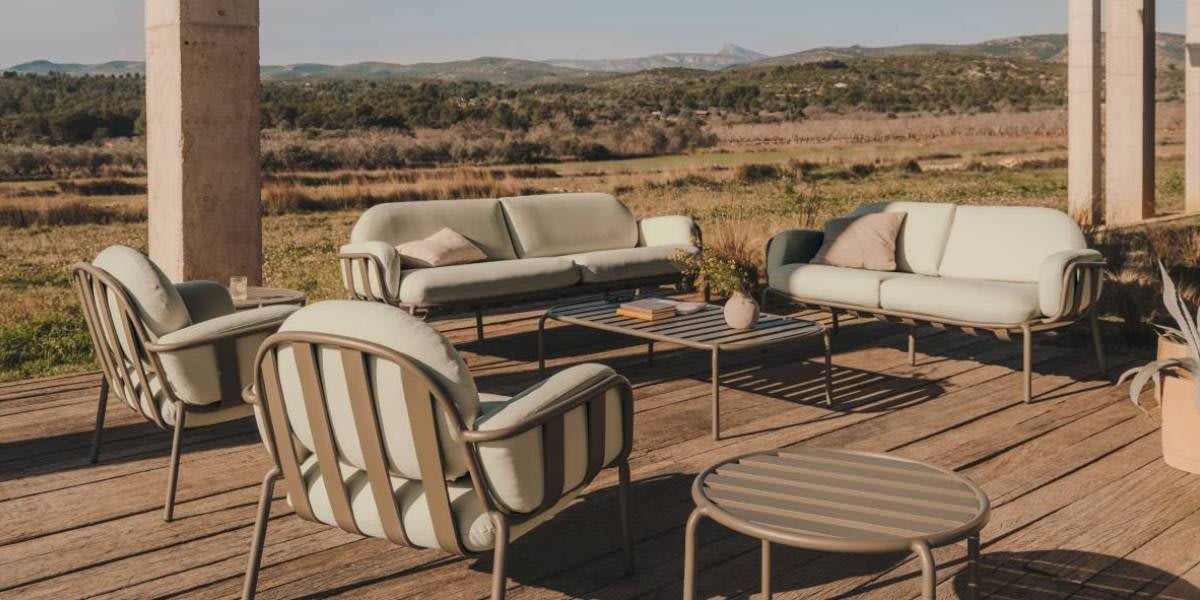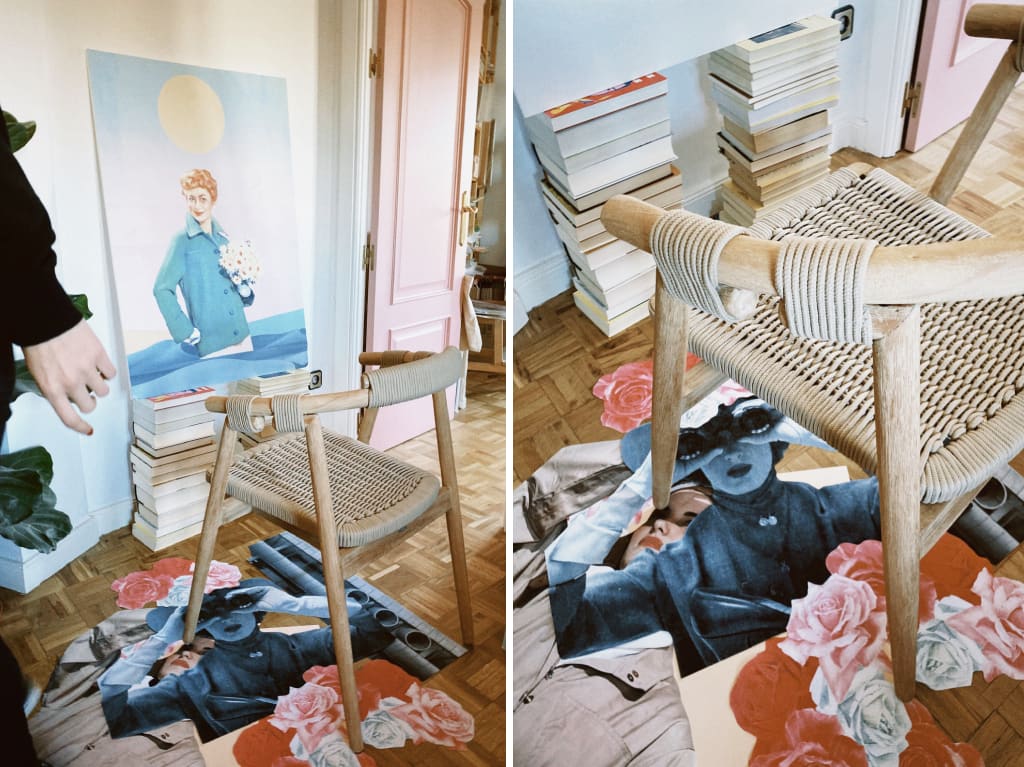
We chat with Made Studio about the Joncols design process
We chatted with Lara Lars, Galician illustrator and architect who talks about feminism and escaping conventions through her impressive surrealist collages. Read on to explore her creative process and find out how she turned her hobby into a career.
1. What artistic technique is your work based on?
I do all my artwork using the collage technique, which involves cutting and pasting existing images, which when decontextualised, take on a new meaning.
2. What makes this artistic technique special?
What I like most about this technique is that it depends a bit on chance and imagination to overcome the difficult parts. Often you can’t find the image you need to make the illustration you have in mind, but then you find another one that ends up turning out even better.
I like the fact that everything depends a little bit on luck. By having to depend on the images that you happen upon, you create new illustrations you could never have expected.
There's a rebellious aspect to it, because what you're actually doing is taking images with an existing meaning and then changing them by putting them in new contexts. I like this because it represents my way of thinking, that of not accepting things as they are, but always trying to give them a new meaning, or find their alternative meaning.
3. How did you get started in art?
It started as a rather personal thing that I did in my spare time, out of a need I felt to change the role of women who were portrayed as decorative objects in the advertisements of the 50s and 60s that appeared in the old magazines I'd collected.
I found it interesting to alter those visual references, so that rather than selling electrical appliances, women had other concerns, I'd make them visit cities, and develop personalities of their own.
I simply wanted to change the visual references that women have regarding these images of women. What I never imagined was that this would end up becoming my profession.

4. Can you take us through the creative process of your work?
It tends to come up in two ways - sometimes I want to express an idea that I have in mind, or something I don't agree with, and I try to represent that in images.
Other times I simply see an image and start imagining how I would modify it.
In either case, once I get something in my head, I don't stop until I get it done, or get it out into the world.
5. You're an architect and illustrator, how does this express itself in your creations?
Clearly, having studied architecture and worked as an architect has influenced my work as an illustrator.
I discovered the technique when I was studying architecture, and the first collage artists that really fascinated me were the Archigram group, who created visions of utopian cities through collage.
Being an architect gives you a wider vision of things, and that's also made it easier for me to focus on illustration without having any previous contacts. I'm good at analysing situations and seeing opportunities.
6. You illustrated the Pride 2021 poster, what was that experience like?
It was a wonderful experience. Actually, I was commissioned to do the Madrid Pride 2021 poster and the posters for the Veranos de la Villa in Madrid at the same time. I was fully aware that these were the two most important commissions for me that year and they happened to coincide at the same time.
These two jobs were a unique opportunity for me and knowing that, I really enjoyed both the process and the fact that both of them were on display, one through the Ministry of Equality, and the other around the city of Madrid.

7. What area of the house is the place where you go to be inspired?
I'm lucky enough to have my studio inside my house, and that's definitely the place that inspires me the most. It's funny, because since I've been in that studio, I see a lot of the Madrid sky, the clouds, and the sunsets, and that's now reflected in my illustrations. Before I only used to use single colours in the background, and now I often feel the need to include backgrounds with clouds or colour gradients because that's what I see every day from my window.
8. How important is the space you're in when you are creating?
It's extremely important. It's important to have your own space, to be able to create and to find inspiration. Virginia Wolf always talked about the importance of having your own room, and I absolutely agree with that. I'd even add: it's important to have your own room with natural light.
9. What does it mean to you to be able to collaborate with Kave Home? Which is your favourite product?
I've always loved the brand’s style and it's important for artists to work with brands they can relate to. I've been in love with the Lalita, headboard for years, and as soon as Kave Home proposed a collaboration, I immediately knew I wanted this to be one of my chosen products.
When you purchase a new furniture item, mattress, kitchen, rug or curtain, you pay an eco-participation, which is used to fund the recycling of your old items.
What is eco-participation?
Eco-participation is an additional fee added to the price of new bedding and furniture, paid by the consumer and transferred to Ecomaison.
Why?
It is used to fund the sorting, recycling, and repurposing of old mattresses and furniture.
How does it work?
Ecomaison implements collection and recycling solutions in partnership with local authorities, social economy organizations (such as the Network of Recycling Centers and Emmaus), and furniture professionals.
Since 2013, through this initiative, Ecomaison has already handled over 10 million tons of used furniture and bedding, preventing the landfill of waste equivalent to 1,000 Eiffel Towers. Previously, 55% of discarded furniture ended up in landfills. Ten years later, it's less than 3%. With 800,000 tons per year, Ecomaison is now the leading supplier of recycled wood in France.
Who is Ecomaison?
Ecomaison is a state-approved eco-organization that manages the sorting, collection, reuse, and recycling of household items and materials, from the foundations to the finishing touches. Its mission is to collect and repurpose household items and materials, giving them a second life by donating, repairing, recycling, or using them as an energy source.
Find a collection point on the website ecomaison.com.
Some products are not longer available
If you want to continue please update your basket